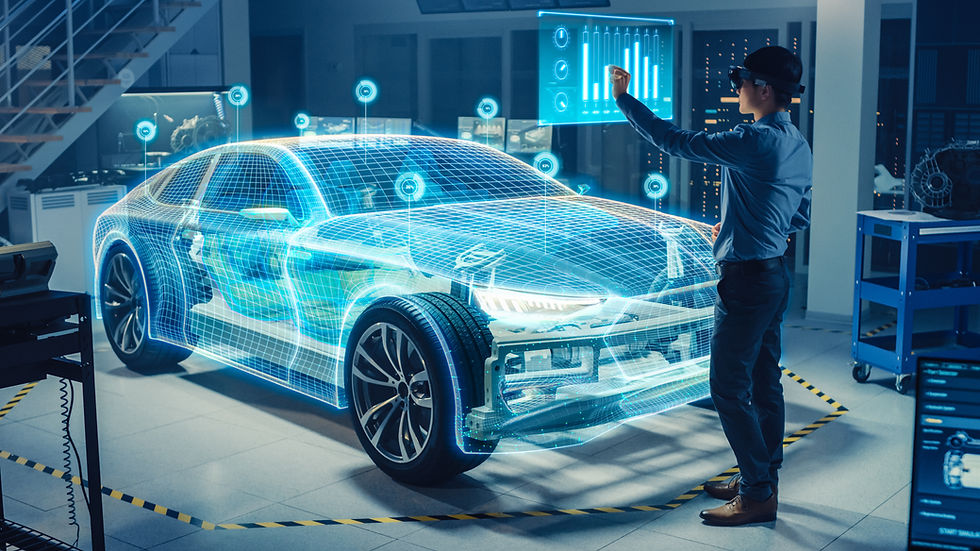Shop 'Til You Drop (Virtually): VR is Revolutionizing Retail
- Jules B.
- Jul 29, 2024
- 3 min read
Explore how virtual reality is changing the retail landscape, making shopping more immersive and interactive than ever before.

KEY POINTS:
Virtual reality (VR) is creating a shopping experience that merges the best of online and in-store shopping.
VR technology allows customers to explore products in a virtual space, enhancing their engagement and satisfaction.
The integration of VR in retail is setting a new standard for customer experience, convenience, and brand loyalty.
Imagine strolling through a bustling marketplace without ever leaving your couch. You can browse through clothing racks, examine products from every angle, and even try on outfits—all from the comfort of your living room.
Welcome to the future of shopping: Virtual Reality (VR). This tech wizardry is revolutionizing how we shop, blending the convenience of online shopping with the immersive experience of a physical store.
Revolutionize Your Ad Campaigns! Are you tired of constantly worrying about your ad budget? Check out our monthly ad subscription plan. Learn more
The New Way to Shop
Forget the tedious scrolling and endless clicking. With VR, shopping becomes an interactive adventure. Retail giants like Ikea and Walmart have already jumped on the VR bandwagon, offering virtual showrooms where you can furnish a room or fill your shopping cart just by looking around.
According to a report by TechCrunch, VR in retail is expected to hit $1.8 billion by 2022, proving that this trend is more than just a gimmick—it's the new normal.
Ad
Trying Before Buying
One of the biggest challenges of online shopping is the inability to try products before purchasing. VR changes the game. Imagine trying on clothes in a virtual fitting room that perfectly mimics your body shape and size.
No more guessing if that shirt will fit or if those shoes will match your outfit. Brands like Zara and Nike are pioneering these virtual fitting rooms, reducing return rates and increasing customer satisfaction.
Enhancing the In-Store Experience
Even physical stores are getting a VR makeover. Instead of a simple display, retailers are creating interactive experiences that engage customers in new ways. For example, Sephora uses VR to let customers try on makeup virtually, ensuring they find the perfect shade without any mess. This level of engagement not only makes shopping more fun but also builds stronger customer loyalty.
"VR in retail is expected to hit $1.8 billion by 2022, proving that this trend is here to stay." - TechCrunch
The Tech Behind the Magic
So, how does it work? VR shopping experiences are powered by sophisticated hardware like VR headsets and motion sensors, along with advanced software that creates realistic, interactive environments. Companies like Oculus and HTC Vive are leading the charge in VR technology, making it more accessible and affordable for both retailers and consumers.
The Future is Here
As VR technology continues to evolve, the possibilities for retail are endless. From virtual malls to personalized shopping assistants, the future of shopping is all about creating a seamless, immersive experience. So, next time you're considering a shopping spree, why not strap on a VR headset and dive into the virtual world?
"Brands like Zara and Nike are pioneering virtual fitting rooms, reducing return rates and increasing customer satisfaction."
Virtual reality is not just a novelty—it's a game-changer for the retail industry. By merging the convenience of online shopping with the sensory engagement of in-store visits, VR is setting a new standard for customer experience. Whether you're a tech enthusiast or a casual shopper, the future of shopping is here, and it's virtual.
.png)














Comentarios